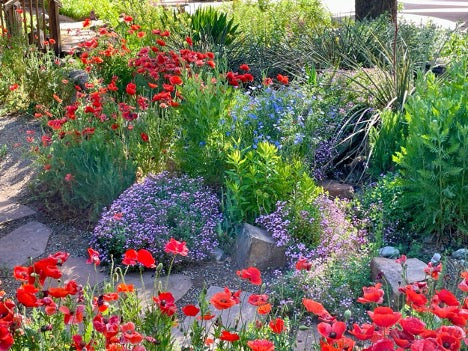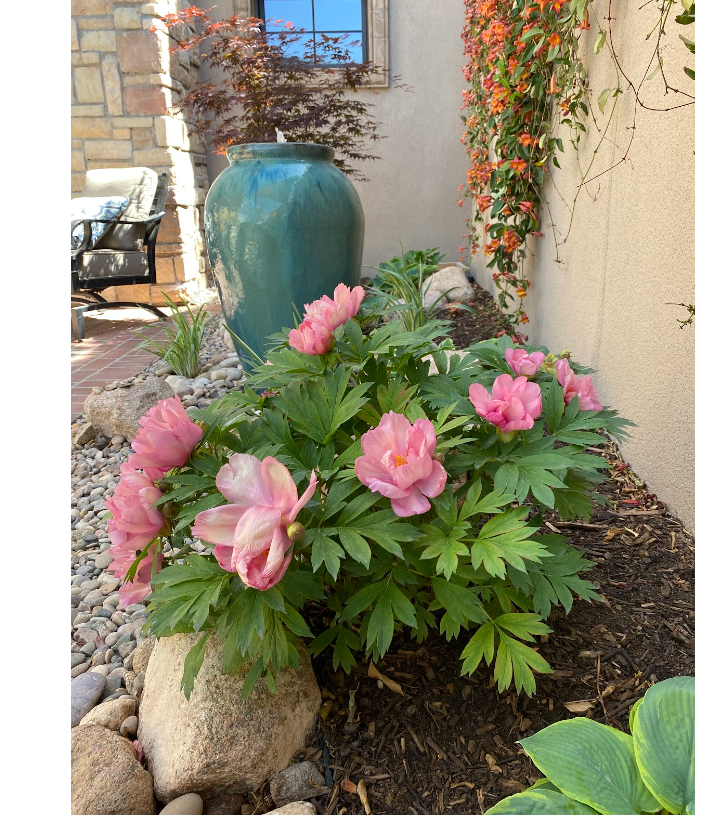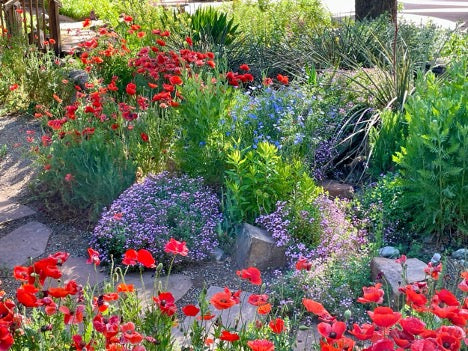Are you wondering how to get the most beauty out of your established landscape? Have you just moved into a home and you’re not sure how to best treat the plants that came with your new yard? Following are some tips on how to make the most out of your landscape.

Determine your Soil Health
Healthy soils cycle nutrients effectively, minimize runoff, retain water, plus they absorb nutrients, sediments, and pollutants. They also provide a great environment for soil microbes as well as trees and plants. Very heavy clay, compacted soil, very sandy soil or extreme pH may impact the plants in your yard. If you are interested in finding out details on the health of your soil, you can have it tested for things like: pH, soil composition, and nutrient/organic matter content. Contact your local Cooperative Extension Office for a soil test kit or recommendations for a testing service. You can also do a simple at home test if you’re just interested in the composition of your soil. Find out how to do an at home test here (link to DIY soil test article)
Amend your Soil with Compost
The easiest and most natural way to improve your soil is by using compost. Compost is decomposed organic matter which is rich in nutrients. It can be used as natural fertilizer to rejuvenate soils in agriculture, home gardens and even houseplants. The benefits of using compost are numerous. Compost improves your soil’s physical, chemical and biological properties and attributes to overall soil health. It also increases water retention capabilities to loose sandy soil and adds drainage capabilities to hard, clay soils. Compost can help neutralize all soil types, leading to soil which is better balanced in terms of pH. Adding compost to your soil aids in the sustainability and diversification of many lifeforms. From worms, to fungi, beneficial bacteria and insects; composted soil is simply rich in the necessary nutrients for all creatures to thrive. When there are beneficial life forms living in the soil, plants grow healthier!
- How to add compost to your existing landscape: You can amend the soil around your established plants by topdressing the area around the roots of your plants with a quality compost. Topdressing is simply applying a 1-2” layer of compost to the surface of your garden beds, tree wells and raised beds. Adding compost is best done annually in the spring or fall. Our gardens use up nutrients in the compost every season therefore it should be added every year to continue feeding your soil. We recommend topdressing with Soilutions Compost. Soilutions Compost has been prized by local farmers and gardeners for over 25 years and it has built our reputation for quality and value.

(Topdressing existing garden bed with Soilutions Compost: prior to raking to 2” thickness)
Using Fertilizers
Chemical Fertilizers
Chemical or Inorganic fertilizers are mined or synthesized from non-living materials and can actually be detrimental to your plants in the long run. These chemicals are absorbed quickly by your plants and can lead to faster results. However, those results are not sustainable unless you keep applying the fertilizers. This rapid new growth can also cause your plants to require more water. Chemical fertilizers are usually made in highly concentrated solutions. If over-applied they can overwhelm your landscape leading to instant damage like root burn. Long term fertilizer use can also lead to a toxic build up of certain nutrients in your soil.
Organic Fertilizers
If your plants are nutrient deficient, it is best to find a product that contains organic, natural or slow-release ingredients. These products feed plants slowly and evenly, helping to create healthy plants with strong roots. We recommend our all natural Soil Food and Bloomin’ Boost soil amendments. Soil Food is a balanced, all-purpose plant food designed to promote leaf and root growth. This amendment is designed to release slowly into the soil and contains organic ingredients like kelp meal, alfalfa meal, feather meal, neem cake, fish bone meal and insect frass. Bloomin’ Boost is our high phosphorus blend of natural ingredients to replenish your soil so your flowering plants can maximize their blooming potential! It is recommended for flower and garden beds or for spot treating flowering shrubs, fruit trees and vegetables.
When to use fertilizers
Generally speaking, the best time to fertilize landscape plants is when they are actively growing. You can begin with slow release fertilizers in the spring as soon as you see your plants starting to break dormancy. Natural amendments can be used every 6 weeks during the growing season. However, use of nutrients should be ceased 6 weeks prior to your area’s first frost date. You don’t want to encourage new growth right before plants and shrubs go into their winter dormancy. Even light frost can damage new growth and cause plants to damage to the plant.

(Dormant hibiscus plants fertilized with Bloomin’ Boost in the spring)

(Same hibiscus plants fertilized with Bloomin’ Boost photographed in the summer)
Make sure you’re Watering Appropriately
The number one thing you can do for your established landscape is to make sure your plants are getting the appropriate water. If your plants aren’t doing well, 9 times out of 10 it's because of improper watering. Make sure to closely monitor the water your plants are getting.
That being said, the best and most sustainable way to water your landscape in the high desert is to use drip irrigation as it delivers slow, consistent water right to your plant’s root zone. It also helps conserve water and reduces weeds. In the greater Albuquerque area, it is recommended to water established shrubs 1 time per week to a depth of 18”, and flowering plants 2 times per week to a depth of 12” (in summer months). There are different watering recommendations in the winter, spring and fall. Please refer to www.505outside for watering guides for trees, plants and lawns.
Lastly, ALWAYS Mulch your Plants!
Adding mulch is an imperative step. Not only does it add beauty to your garden, it locks in moisture and nutrients to keep your garden vivacious all season long. Any of Soilutions mulches will accomplish this goal, just choose the aesthetic you like the best!





